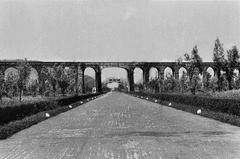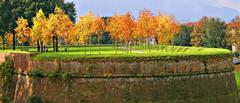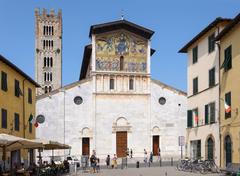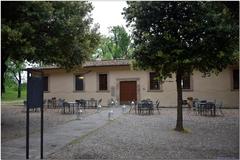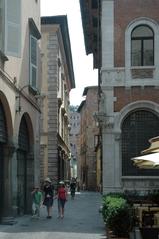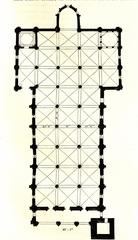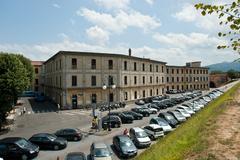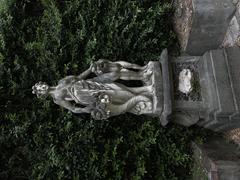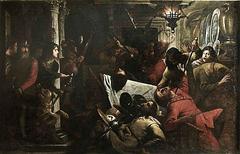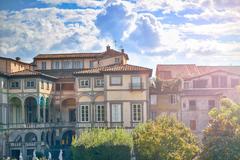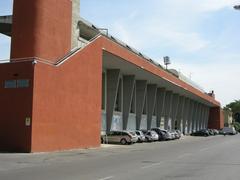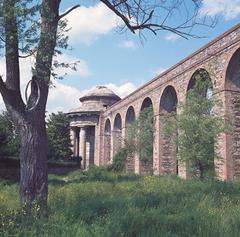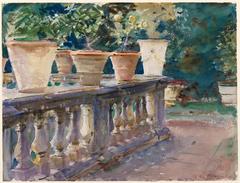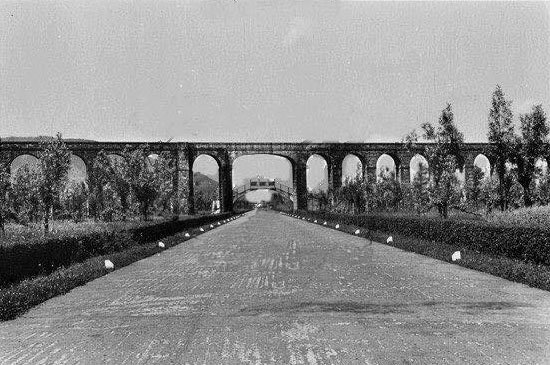
Comprehensive Guide to Visiting Tempietto di San Concordio
Published Date: 19/07/2024
Introduction to Tempietto di San Concordio
For visitors, the Tempietto di San Concordio is more than just a historical monument; it is a living testament to Lucca’s enduring faith and rich cultural heritage. This guide will delve into the church’s historical background, architectural features, visitor information, and travel tips, ensuring you make the most of your visit to this remarkable site.
Table of Contents
- Introduction
- Historical Background and Significance
- Architectural Significance
- Visitor Information
- FAQ
- Conclusion
Historical Background and Significance
Early History and Construction
The church’s origins can be traced back to the 8th century, a period when Lucca, like much of Italy, was grappling with the aftershocks of the Roman Empire’s fall. During this time, the Lombards, a Germanic people, held sway over the region. It was under their rule, around the year 750 AD, that the first iteration of San Concordio was erected. This initial structure, likely a modest chapel, served as a beacon of Christianity amidst the changing political and social landscape.
Dedication to San Concordio
The church’s dedication to San Concordio, a martyr saint of the early Christian church, speaks volumes about the religious climate of the time. While details of San Concordio’s life remain shrouded in some mystery, his veneration in Lucca underscores the city’s early embrace of Christianity and the importance placed on the stories of those who died for their faith.
Romanesque Revival and the 11th-Century Transformation
As Lucca prospered in the following centuries, so too did its religious structures. The 11th century ushered in a period of significant architectural renewal across Europe, with the Romanesque style taking center stage. Lucca, a key player in the flourishing Tuscan economy, embraced this architectural movement with fervor.
Around the year 1000 AD, the Tempietto di San Concordio underwent a dramatic transformation, reflecting this broader Romanesque revival. The earlier, simpler structure was replaced with the building that largely survives today. This new church, built with the characteristic features of the Romanesque style, showcased the city’s growing wealth and its commitment to religious art and architecture.
Architectural Significance
A Hallmark of the Romanesque Style
The Tempietto di San Concordio stands as a well-preserved example of Romanesque architecture in Lucca. Several key features highlight its adherence to this style:
- Simple, Geometric Forms: The church’s design emphasizes clean lines, a compact rectangular nave, and a small, semi-circular apse. This focus on geometric clarity is a hallmark of Romanesque architecture.
- Thick Walls and Small Windows: The Tempietto’s thick walls, constructed from local stone, and its relatively small windows are characteristic of the Romanesque period. These features served both a structural purpose, providing stability, and a symbolic one, conveying a sense of fortress-like solidity and spiritual refuge.
- Decorative Blind Arches: The church’s exterior is adorned with decorative blind arches, another common element of Romanesque design. These arches, while not structurally functional, add visual interest and rhythm to the façade.
- Sculptural Embellishments: While the Tempietto’s overall design emphasizes simplicity, it is not devoid of ornamentation. The main portal features intricately carved capitals, showcasing the skill of Romanesque sculptors. These carvings often depict biblical scenes or symbolic motifs, adding layers of meaning to the structure.
Later Centuries and Preservation
Over the centuries, the Tempietto di San Concordio remained a place of worship, though it never achieved the grandeur of Lucca’s larger basilicas. This, however, has proved to be a blessing in disguise. While larger churches often underwent significant renovations and expansions, altering their original character, the Tempietto has remained remarkably intact.
Today, the Tempietto di San Concordio stands as a testament to Lucca’s rich past and its enduring faith. Its well-preserved Romanesque architecture offers a glimpse into the city’s medieval splendor, while its continued use as a church underscores the enduring power of religious tradition. For visitors to Lucca, the Tempietto provides a unique opportunity to step back in time and experience the city’s history firsthand.
Visitor Information
Visiting Hours and Ticket Prices
The Tempietto di San Concordio is open to visitors year-round. Operating hours are typically from 9 AM to 6 PM. Admission is usually free, but donations are appreciated to help with the upkeep of this historical site.
Travel Tips and Accessibility
Located in the center of Lucca, the Tempietto di San Concordio is easily accessible by foot from most parts of the city. Public transportation options, such as buses, also provide convenient access. The site is wheelchair accessible, though some areas inside the church may be more challenging to navigate due to its historic nature.
Nearby Attractions
Special Features
Special Events
The Tempietto di San Concordio occasionally hosts special events, including religious ceremonies, concerts, and art exhibitions. Check the official website or local event listings for information on upcoming events.
Guided Tours
Guided tours are available for those interested in a more in-depth exploration of the Tempietto’s history and architecture. These tours are typically offered in multiple languages and can provide valuable insights that enrich the visitor experience.
Photographic Spots
The Tempietto di San Concordio offers numerous spots for photography enthusiasts. The church’s Romanesque architecture, intricate carvings, and serene surroundings make it an ideal location for capturing stunning images.
FAQ
Q: What are the visiting hours for the Tempietto di San Concordio?
A: The Tempietto di San Concordio is typically open from 9 AM to 6 PM. Check the official website or local tourist information for the most current hours.
Q: Is there an admission fee to visit the Tempietto di San Concordio?
A: Admission is usually free, but donations are appreciated.
Q: How can I get to the Tempietto di San Concordio?
A: The Tempietto is centrally located in Lucca and is easily accessible by foot, public transportation, or car.
Q: Are guided tours available?
A: Yes, guided tours are available and can be booked through local tourist agencies or the official website.
Q: Are there any special events held at the Tempietto di San Concordio?
A: Yes, the Tempietto occasionally hosts special events such as religious ceremonies, concerts, and art exhibitions.
Conclusion
The Tempietto di San Concordio is not just a historical monument but a living testament to Lucca’s enduring faith and rich cultural heritage. Whether you’re a history buff, architecture enthusiast, or simply a curious traveler, a visit to the Tempietto offers a unique glimpse into the past. Don’t miss the opportunity to explore this remarkable site and immerse yourself in the history and beauty of Lucca.
For more information and updates, consider downloading the Audiala mobile app, checking out related posts, or following us on social media.
